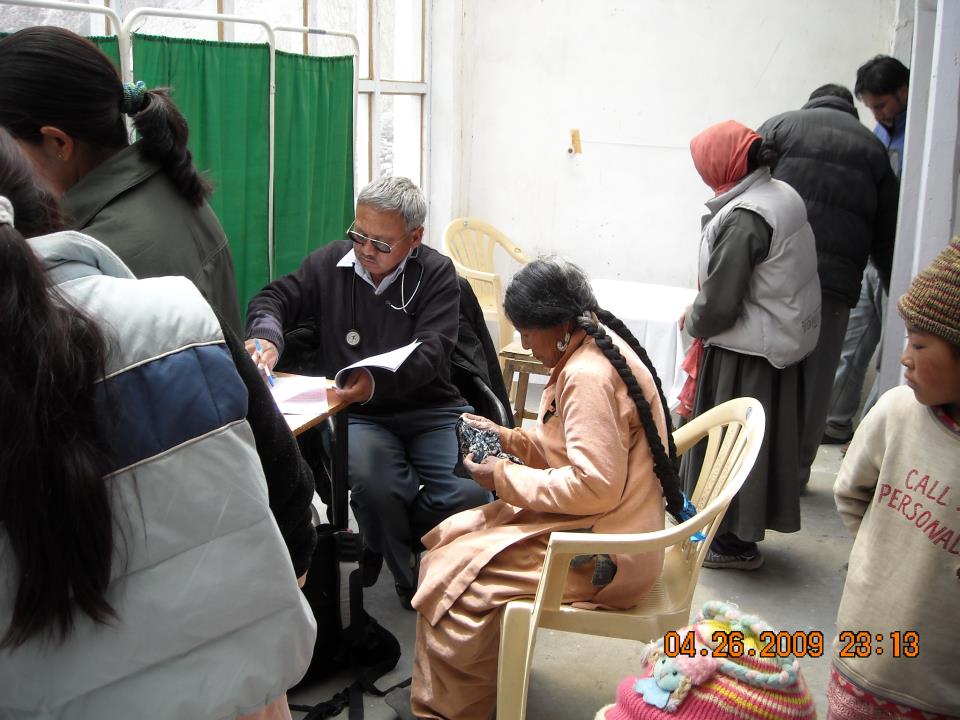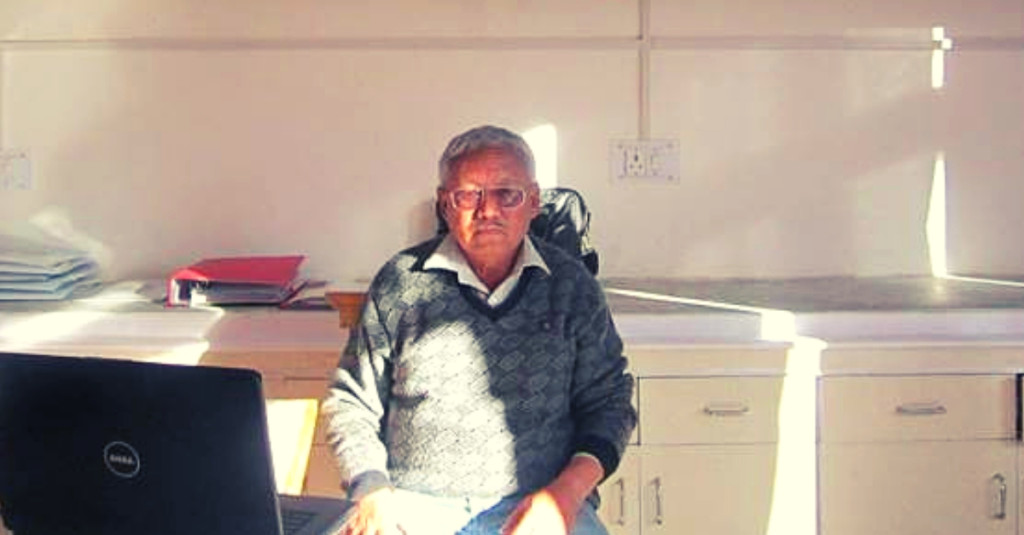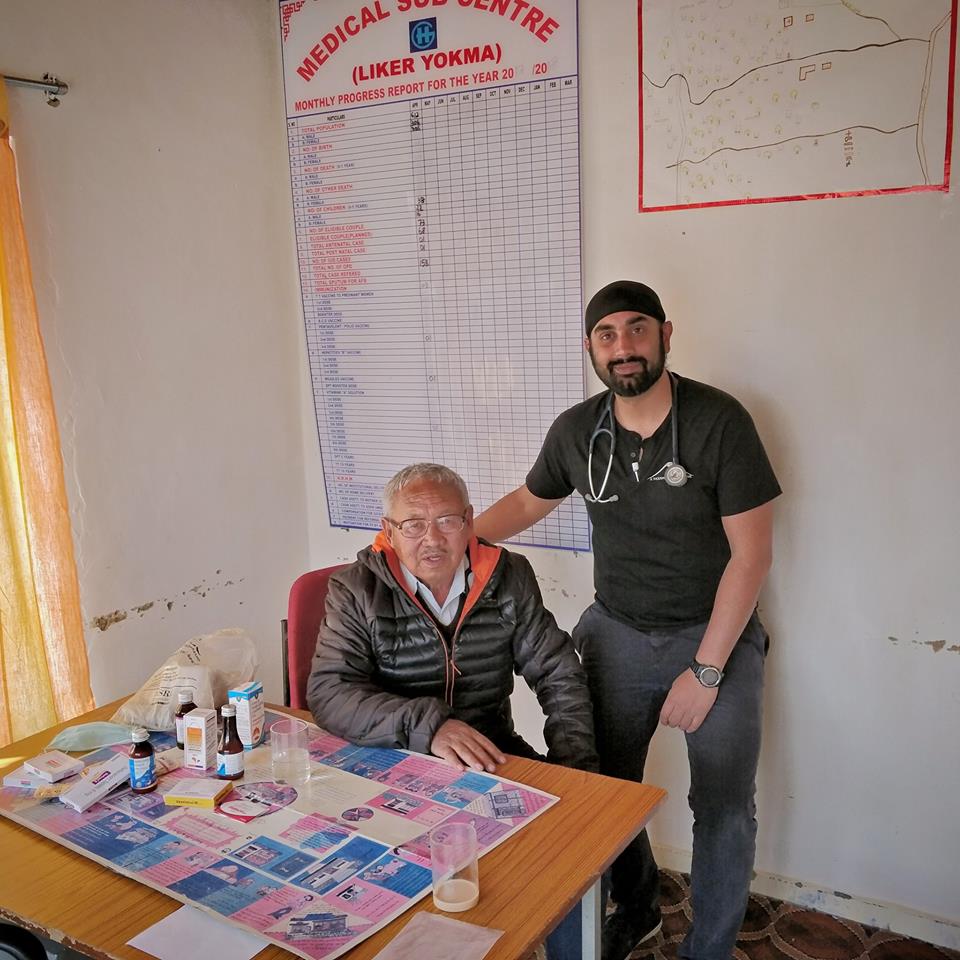The first Ladakhi physician to serve at Leh’s only govt. hospital, Dr.Tsering Norboo is now working on a project that could revolutionize public health care in India. #PadmaShri #Respect #RealLifeHero.
For nearly 50 years, Dr Tsering Norboo, a general physician by trade, has tirelessly served the people of Ladakh—a region with limited health infrastructure.
On Republic Day, Dr Norboo was presented with the Padma Shri award—the fourth highest civilian award—from the President of India.
For someone who got into the profession by chance, the work he has done in the field of medicine for citizens living in one of India’s most remote districts is quite remarkable.
Born on April 16, 1944, in the picturesque village of Spituk in Leh district, Dr Norboo first served as a medical officer across rural Ladakh before completing his MD.
Following this, in 1980 he had the distinction of becoming the first Ladakhi physician to practice at the Sonam Norboo Memorial (SNM) Hospital, the only recognised district-level hospital in the region.
“Whatever I have achieved in the last 50 years of my professional life is due to the unwavering confidence and faith of the people of Ladakh. For me, practising medicine in these parts is a sincere social activity,” says Dr Norboo, in a conversation with The Better India.
It’s imperative to understand just how rudimentary healthcare services in Leh were in the beginning.
When he started out, the district hospital just had 20 beds, and there were no specialists. The first batch of specialists came in from Kashmir before locals began filling up the ranks.
“In the late 1970s, 80s and 90s, we had an excellent batch of doctors, who established a dedicated work culture, but basic facilities like regular 24×7 running water or electricity were missing. It was only on the back of their tireless service that locals had some semblance of access to healthcare services. Gradually, the doctors and non-profits began lobbying the government for better facilities. Things have particularly improved after the flash floods of 2010, but there is still some way to go,” he says.
For example, the SNM Hospital just acquired its first dialysis machine unit earlier this month.
During his time in government service, Dr Norboo made a host of valuable contributions by not merely treating patients, but also conducting extensive campaigns and relevant research in high altitude healthcare that is today recognised world over.
“When I joined as a physician, the first notable thing I observed was that many respectable elderly people were dying as a result of heart attacks. Through research, I found that 90% of them were regular smokers since the 1940s. Responding to this concern, my colleagues and I started this initiative called Ladakh Action on Smoking and Health (LASH) to tackle the menace of tobacco smoking in 1988. I played a leading role in reducing the prevalence of tobacco smoking in Ladakhi men from 42% in 1988 to 8% in 2010 across urban areas and nearby blocks,” he says.
The approximately two-decade-long public outreach campaign involved all major stakeholders like the All India Radio, educational institutions, community-based organisations, non-profits and government-based bodies like the police and district administration.
This regular and concerted effort eventually bore fruit.
Besides the anti-tobacco campaign, Dr Norboo discovered the primary respiratory diseases afflicting Ladakhis, during his tenure in government service.
“I noticed 60% of the patients in the medical ward were suffering from respiratory diseases. People, particularly from the Indus Valley belt, were seemingly coming in for treatment for tuberculosis (TB), going by their X-ray results. However, on taking anti-TB medication, their symptoms would persist, and the condition would remain uncured. That’s when I thought there is something else going on here,” he says.
Through extensive and well-designed studies, Dr Norboo figured out that it wasn’t TB, which was afflicting Ladakhis, particularly those living in the Indus Valley belt. It was the inhalation of respirable environmental dust particles (containing tiny particles of silicon dioxide), and carbon particles emanating from open fires and domestic cooking practices that was resulting in mixed dust pneumoconiosis and silicosis.
This path-breaking finding found global recognition, and the findings were published in the early 1990s across reputed scientific journals like Thorax and British Journal of Industrial Medicine.
Such was the quality of the study that even the International Labour Organisation (ILO) realised that mixed dust pneumoconiosis and silicosis can also occur in a non-industrial set up.
Its most important outcome is the intervention that followed, which led to much cleaner air at home and the work environment.
Post-retirement in 2002, he founded the Ladakh Institute for Prevention (LIP), a non-profit dedicated to formulating critical public health solutions, particularly for citizens residing in high-altitude areas.
Combining clinical medicine, preventive medicine, and extensive research, Dr Norboo, his team of volunteer doctors and health workers would go into the remote corners of Ladakh, bringing basic healthcare services to their doorstep.
Running mobile medical camps with all the necessary laboratory equipment like ultrasound machines and ECGs, he also conducts extensive surveys on non-communicable diseases based on WHO and ICMR guidelines.
“We travel to altitudes ranging from 2,900 to 4,900 metres; and places like Zanskar that are cut off from mainland India for six months in a year. It’s difficult to develop infrastructure, and there aren’t as many doctors as in the plains,” says Dr Norboo.
Let’s take the example of Zanskar. The doctor and his team have been visiting the region once every year since 2010. Covering all the villages, the mobile clinic conducts a complete health check-up of residents.
They measure height, weight, BMI and blood pressure and other indices before registration. Following registration, they take blood samples to measure blood sugar, conduct a lipid profile, test it for Hepatitis B and after all that conduct other tests.They also ask locals to fill up a simple questionnaire regarding their daily behaviour—physical activities, occupation, diet and whether they partake in any vices like drinking alcohol and smoking. All this data is closely examined.
“At the end of it, after going through all the findings, we offer them a proper diagnosis, advice for the same, and recommend treatment. This is a complete programme, and all findings are delivered in mini health books that we give to them,” he says.
Thus far, they have screened nearly 5000 people for Hepatitis B—a preventable disease. Those whose tests come back negative are encouraged to get their vaccination, while those who test positive for further investigation and appropriate treatment. This is one of the interventions which can prevent liver cancer and other chronic liver diseases.
“We even call them up for a follow-up to our clinic in Leh and share all the data with local primary health centres and other public health officials,” he adds.
However, it’s their latest project which has the potential to revolutionise public health not just in Ladakh, but India as well.
LIP is currently establishing a mother and child health handbook system in which the health of the mother during the entire duration of the pregnancy, and nine months post-delivery, is documented on a regular basis.
Information about the child, from birth till five years of age is also registered. Thus far, LIP has documented 4000 mothers and children under this system.
This ‘user-friendly’ handbook is essentially a single-tool examination system for the mother and child along the lines of the WHO’s recommendation last year for health providers to promote the use of ‘home-based health records.’
The handbook also maintains vaccination records, dental health and motor milestones.
“For example, the head circumference of the child is never recorded. At birth, most children have a head circumference of 36 or 37 cm. When an infant is 1.5 months, the head circumference should increase to 38-39 cm. This gives us the indication that a child’s brain is growing. If it’s not growing according to plan, then we can understand that something went wrong during pregnancy or labour, which has given hypoxia (brain starved of oxygen) to the brain of the child and thus is not developing. We can thus pick up potential obstacles to the development of the child’s cognitive abilities. We plot these age and gender-specific findings on a colour coded graph,” says Dr Norboo.
He reveals that the data collected over the past three or four years is yet to be analysed. However, once this is done, it will give a lot of critical information to gynaecologists, paediatricians, health workers and other stakeholders in the public health system working in the highlands of the Himalayas.
Another critical element of his work is studying environmental, occupational and lifestyle-related diseases in high-altitude areas.
“The demography has changed, the population has increased, and epidemiology of diseases have changed. Life is fast changing in Ladakh and people are consuming unhealthy rich food, living a sedentary life and spending disposable income on unhealthy habits that have resulted in many non-communicable diseases like hypertension, stroke, heart attack, depression, vehicular accidents, cancer and chronic respiratory diseases,” he says.
Hypoxia, the lack of oxygen, is at the centre of the problem. For medical conditions like cancer, Alzheimer’s, dementia, the critical factor to note in places like Ladakh is the lack of oxygen.
For some locals, adaptation to high-altitude conditions is proving to be hard, especially because they physically work less than their ancestors. It compromises their ability to survive in these conditions. This is why the focus on the prevention of non-communicable diseases in high altitude is so critical.
“There is a stage when increasing haemoglobin levels in the blood is counter-productive. Beyond a certain metric, the blood turns very thick and creates obstacles for blood flow into the brain. Symptoms like headaches appear and the condition affects your heart, lungs, and pulmonary systems. Oxygen saturation drops radically. It is a kind of accelerated ageing. Living in high-altitude conditions for many years, can shorten your lifespan—it is known as Monge’s disease,” says Dr Norboo.
Besides everything else he does, Dr Norboo also works closely with DRDO, particularly for their Defence Institute of Physiology and Allied Sciences (DIPAS) wing.
Recently, he was part of a research team looking into the problems faced by soldiers during their two-year tenure in high altitude areas. The team followed an entire company from their dwellings in the plains to the heights of their posting in Ladakh.
Today, Dr Norboo is in his mid-seventies, but that hasn’t stopped him in his search for better healthcare solutions for the long-ignored people of Ladakh.
He continues to selflessly serve them with a rare spirit of kindness and humility and is an example we should all look up to.
Article Credit: TheBetterIndia



